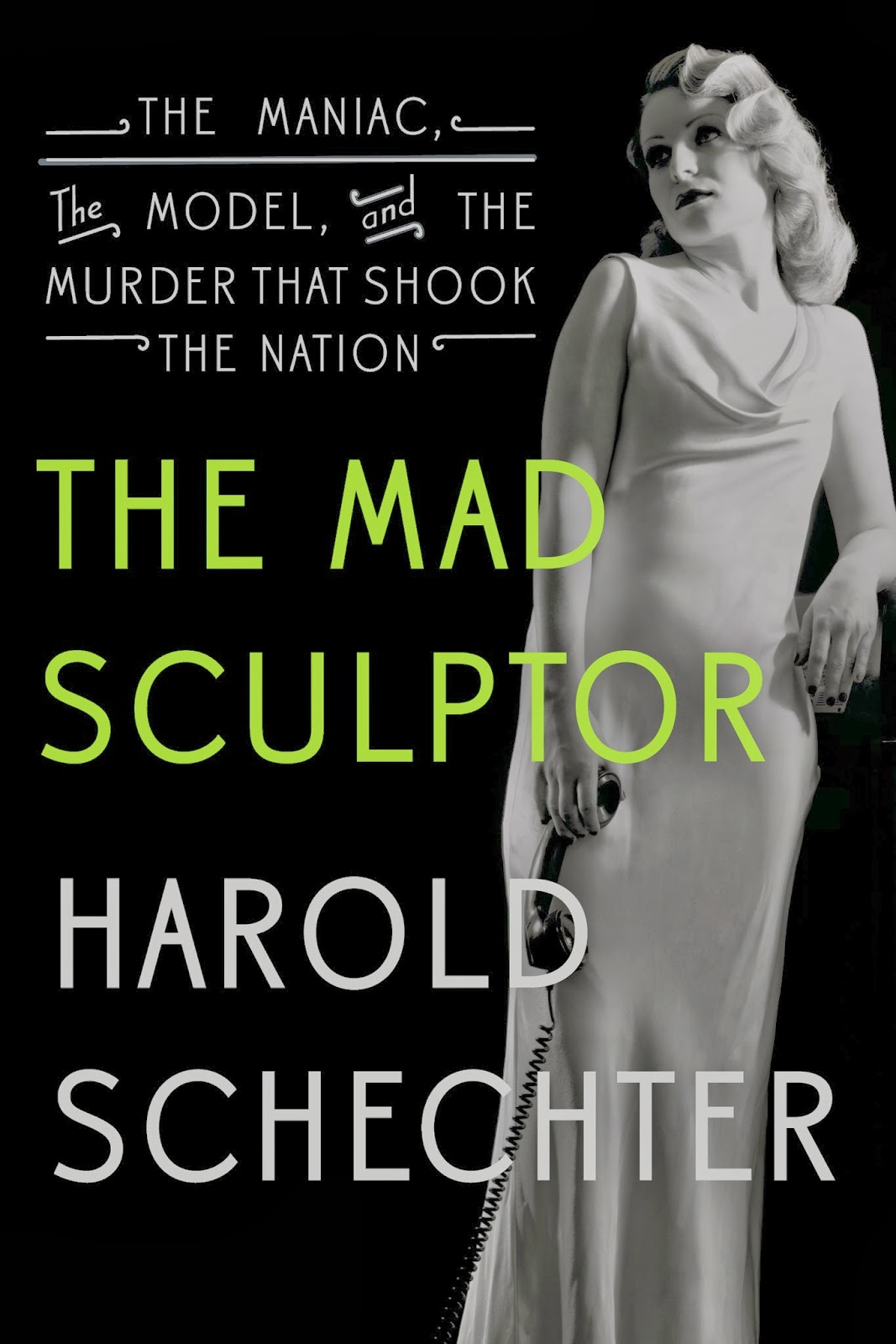Author: Harold Schechter
Book Synopsis
Beekman Place, once one of the most exclusive
addresses in Manhattan, had a curious way of making it into the tabloids in the
1930s: “SKYSCRAPER SLAYER,” “BEAUTY SLAIN IN BATHTUB” read the headlines. On
Easter Sunday in 1937, the discovery of a grisly triple homicide at Beekman
Place would rock the neighborhood yet again—and enthrall the nation. The young
man who committed the murders would come to be known in the annals of American
crime as the Mad Sculptor.
Caught up in the Easter Sunday slayings was a
bizarre and sensationalistic cast of characters, seemingly cooked up in a
tabloid editor’s overheated imagination. The charismatic perpetrator, Roger
Irwin, was a brilliant young sculptor who had studied with some of the masters
of the era. But with his genius also came a deeply disturbed psyche; Irwin was
obsessed with sexual self-mutilation and was frequently overcome by outbursts
of violent rage.Irwin’s primary victim, Veronica Gedeon, was a figure from the world of pulp fantasy—a stunning photographer's model whose scandalous seminude pinups would titillate the public for weeks after her death. Irwin’s defense attorney, Samuel Leibowitz, was a courtroom celebrity with an unmatched record of acquittals and clients ranging from Al Capone to the Scottsboro Boys. And Dr. Fredric Wertham, psychiatrist and forensic scientist, befriended Irwin years before the murders and had predicted them in a public lecture months before the crime.
Based on extensive research and archival
records, The Mad Sculptor recounts the chilling story of the Easter Sunday
murders—a case that sparked a nationwide manhunt and endures as one of the most
engrossing American crime dramas of the twentieth century. Harold Schechter’s
masterful prose evokes the faded glory of post-depression New York and the
singular madness of a brilliant mind turned against itself. It will keep you
riveted until the very last page.
About the AuthorHarold Schechter is an American true crime writer who specializes in serial killers. He attended the State University of New York in Buffalo where his PhD director was Leslie Fiedler. He is professor of American literature and popular culture at Queens College of the City University of New York .Schechter is married to poet Kimiko Hahn. He has two daughters from a previous marriage: the writer Lauren Oliver and professor of philosophy Elizabeth Schechter.
QUESTION:
Describe your process of writing and/or research.
Answer from
Harold: Researching a full-length criminal biography like THE MAD SCULPTOR
takes about a year. I spend weeks and
weeks at the New York Public Library, reading and copying newspaper clippings
on microfilm and digging up legal documents at the New York City Municipal
Archives. I made several visits to the
Library of Congress to go through Fredric Wertham's papers. I used the services of genealogical records
researcher to locate descendants of key figures, then interviewed them when
possible. Generally speaking, as in this
case, I end up with thousands of pages of documents. The challenge for me as a writer is to
transform that mass of material into a compelling, page-turning narrative
without resorting to novelistic embellishment.
A lot of that has to do with structure.
A lot has to do with the fundamental writing principle of converting
telling into showing. For example, a
newspaper story might report, "When Officer Holden got out of the elevator
and approached the woman, she suddenly asked how the man was. Holden inquired whom she meant. In response, the woman indicated the 'man
upstairs' and repeated her question. When Holden said he didn't know and asked
her why she was curious, the woman calmly replied that she had 'shot
him." Without inventing anything, I
can make the scene more dramatic simply by present it this way:
As Holden
stepped out and approached her, she suddenly said: “How is he?”
“Who do you
mean,” said Holden.
“The man
upstairs,” said the woman. “Is he all right?”
"I don’t
know,” said Holden. “Why?”
“I shot him,”
the woman said calmly.
Harold Schechter's upcoming events:
February 27th at Mysterious Bookshop in NYC
February 23rd at the Flagler Museum in Florida
The Mad Sculptor (Of True Crime) Blog Tour Itinerary:
February 18th - My Life of Crime Blog
February 19th - Murder by Gaslight Blog
February 20th - True Crime Diary Blog
February 21st - All Things Crime Blog
February 24th - Historical Crime Detective Blog
February 25th - True Crime Reader Blog
February 26th - CLEWS Blog
February 19th - Murder by Gaslight Blog
February 20th - True Crime Diary Blog
February 21st - All Things Crime Blog
February 24th - Historical Crime Detective Blog
February 25th - True Crime Reader Blog
February 26th - CLEWS Blog









.jpg)











0 comments :
Post a Comment